| Botanical Name |
|
| Family |
Asclepiadaceae - The carrion or milkweed family. |
| Pronunciation |
hew-ERN-ee-uh HISS-tricks |
| Common Name(s) |
English: Porcupine Huernia; Toad plant
IsiZulu: Umanhlangwane; Usilelo
|
| Plant Group |
- Ground Cover A plant with a low-growing, spreading habit, grown specifically to cover the ground.
- Succulent A plant having fleshy stems or leaves often adapted to dry conditions.
|
| Plant Size |
- Very Small
| Tree | 3m to 4m |
| Shrub | 25cm to 50cm |
| Perennial/ground cover | Up to 10cm |
| Bulb | 10cm to 20cm |
| Succulent | Up to 5cm |
|
| Position |
- Sun The area is in full sun for all or most of the day, all year round.
|
| General Information |
- Drought Tolerance: High The plant is well adapted to arid conditions; it can survive long periods of drought and high temperatures without extra water.
- Evergreen Plants that have leaves all year round.
- Frost: Tender A plant that will not survive any frost or low winter temperatures.
- Water Wise Plant species originating from low rainfall regions that require less water to survive and thrive than other plant species.
|
| Specific Information |
As the common name implies, Huernia hystrix has sharply pointed teeth which makes it quite difficult to handle. It prefers hot, dry situations: beware of over watering. The fruits are tall, probably to aid in spreading the seeds in the wind. As with all the plants in this group, the flowers smell of rotten meat as these plants are pollinated by flies. Not a good house plant!
|
| Ad Break |
|
| Flowers |
| Description |
star-shaped, frilly surface
|
| Season |
- All Year Plants will seldom bloom for the entire season as given in the list, but should flower during a period within these parameters.
- Summer Plants will seldom bloom for the entire season as given in the list, but should flower during a period within these parameters.
|
| Colour |
|
| Growth Rate |
- Moderate Specifying growth rate can be very misleading as there is considerable variation of growth rate depending on type and species of plant, available water, supplementary feeding, mulching and general care, as well as the plants suitability and adaptability to the garden environment.
|
| Plant Uses |
- Container Trees, shrubs and ornamental species that can adapt to growing in a restricted environment.
- Edging A low growing plant that provides softness or definition to the edges of a bed or walkway.
- Filler Either a fast growing tree or shrub used temporarily to fill in an area while the permanent plants grow to a desired size, or a plant used to fill gaps in borders or beds.
- Ground Cover Low-lying plants that spread fast, require minimal maintenance, and cover large expanses or bare areas between bulbs or shrubs. They provide protection from erosion and drought and improve the visual appearance of the garden.
- Pot Plant A plant that needs a protected environment on a patio or indoors.
- Rock Garden An area constructed of larger rocks, arranged naturally, to emphasise the use of stones as a main element. Generally plants used do not need a lot of care.
- Wild Garden An indigenous garden planted for the benefit of wildlife and birds. Provides food, water, a variety of mini-biomes and no poisonous chemicals are used.
|
| Distribution and Habitat |
KwaZulu-Natal, Mpumalanga and Limpopo, as well as Swaziland, Zimbabwe and Mozambique, in dry rocky scrub
|
| Planting Suggestions |
Plant in very well-drained soil - coarse and sandy if possible. In the veld this plant is often found in the light shade of grasses or other succulents. I have found that a little shade each day is beneficial. Do not over-water or they will rot. Protect from frost.
|
| Medicinal Uses |
|
| Ad Break |
|


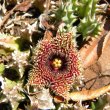
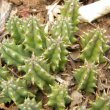
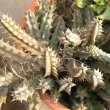
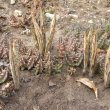
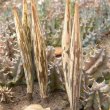


Discuss this plant
Share knowledge, ask a question or give an experience.